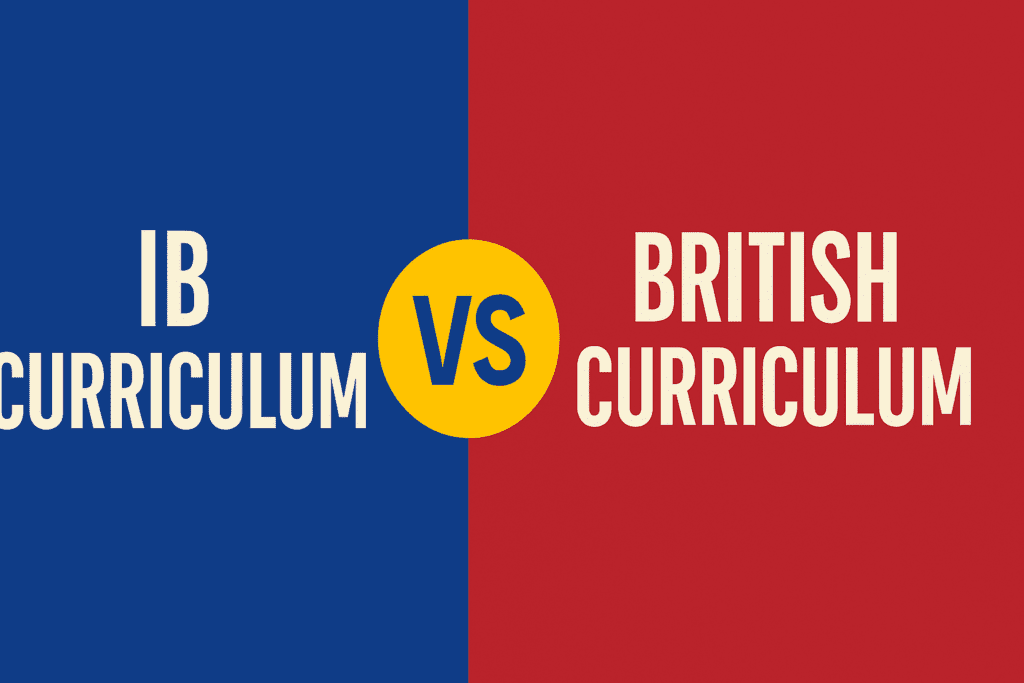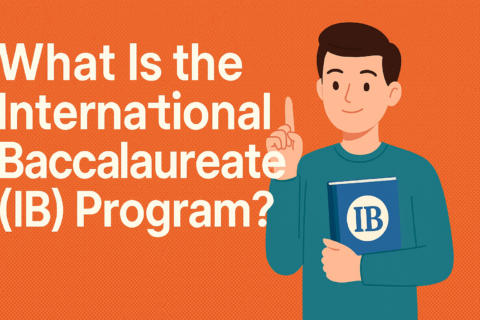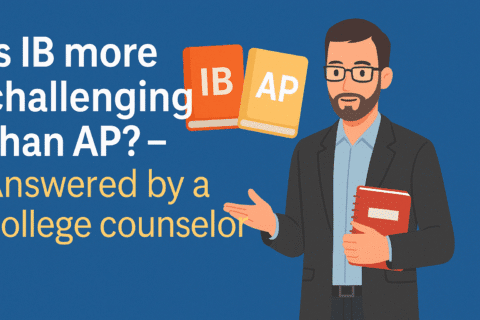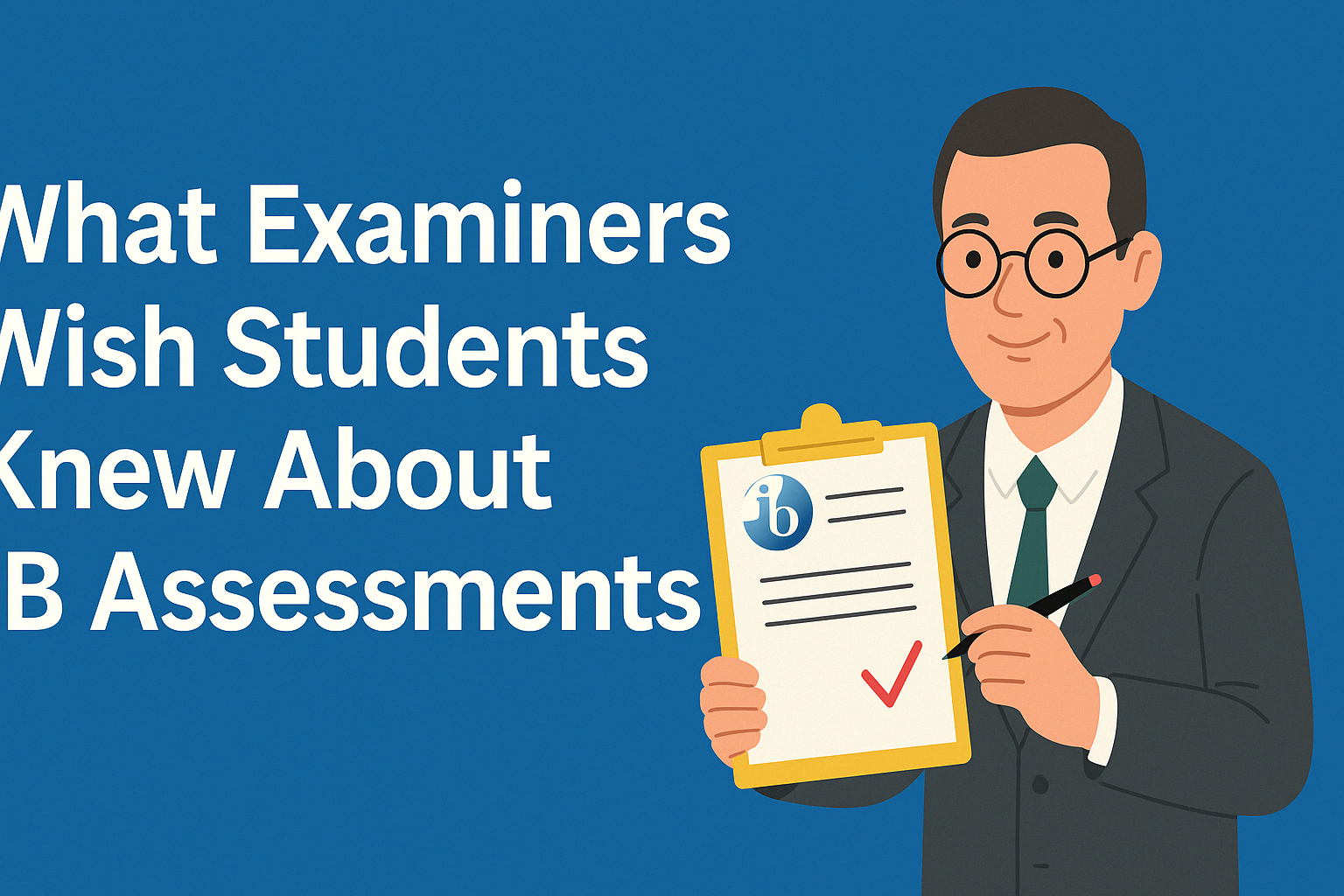Introduction
As global mobility increases and international schools expand across regions like the UAE, Singapore, India, and Hong Kong, more families are seeking the best-fit curriculum for their children. Two of the most widely offered and respected frameworks are the International Baccalaureate (IB) and the British Curriculum (UK National Curriculum).
Understanding how these two systems differ—in structure, philosophy, assessment, and recognition—is essential when making an informed decision.
This comprehensive comparison explains the similarities and key differences between IB and British curriculum pathways to help international families choose with confidence.
Overview of the IB and British Curriculum
What Is the IB Curriculum?
The International Baccalaureate (IB) is a global educational framework designed for students aged 3 to 19. It includes:
Primary Years Programme (PYP) – Ages 3–12
Middle Years Programme (MYP) – Ages 11–16
Diploma Programme (DP) – Ages 16–19
Key features:
Holistic, student-centered approach
Emphasis on inquiry-based learning and global mindedness
Focus on independent research, reflection, and critical thinking
What Is the British Curriculum?
The British Curriculum, also known as the UK National Curriculum, is structured in progressive Key Stages (KS):
Key Stage 1 (KS1): Ages 5–7
Key Stage 2 (KS2): Ages 7–11
Key Stage 3 (KS3): Ages 11–14
Key Stage 4 (KS4): Ages 14–16 → leads to GCSEs
Key Stage 5 (KS5): Ages 16–18 → leads to A-Levels
Key features:
Emphasizes academic rigor and subject mastery
Students specialize early in key subjects
Highly structured and exam-focused
Key Differences Between IB and British Curriculum
| Feature | IB Curriculum | British Curriculum (UK) |
|---|---|---|
| Teaching Approach | Inquiry-based, cross-disciplinary | Subject-focused, exam-driven |
| Assessment | Internal & external assessments (TOK, EE) | Standardized exams (GCSEs, A-Levels) |
| Subjects | 6 subject groups + core (CAS, TOK, EE) | Students choose 8–10 GCSEs; 3–4 A-Levels |
| Recognition | Globally accepted (US, UK, EU, Canada) | Widely recognized in UK and Commonwealth |
| Flexibility | Fixed structure, broad coverage | Greater subject choice and depth |
| Focus | Interdisciplinary, international mindedness | Academic specialization and mastery |
Which Curriculum Is Harder or More Challenging?
This depends on a student’s learning style and academic preferences.
IB: Requires balance across multiple subjects and core components (TOK, EE, CAS). Time management and consistent effort are crucial. HL subjects are demanding.
A-Levels: Highly specialized, allowing deep focus on fewer subjects. Final exams determine most of the grade, creating high stakes but also focused preparation.
Students who are generalists or enjoy research and global issues may prefer IB, while those who thrive in depth and structured exams may perform better in A-Levels.
University Recognition and College Admissions
IB
Recognized by top universities worldwide
Seen as rigorous preparation for university study
May lead to college credits or advanced standing in the US and Canada
British Curriculum
Strongly valued by UK, Australian, and Commonwealth universities
A-Levels are the gold standard for UK university entry via UCAS
Also accepted globally, particularly with strong subject results
Both qualifications are highly regarded. Competitive universities assess based on overall performance, personal statements, and admissions tests.
Pros and Cons of Each Curriculum
✅ IB Curriculum Pros
Holistic development through CAS, TOK, EE
Global recognition
Strong focus on independent research and thinking
Well-rounded subject mix
❌ IB Curriculum Cons
High workload
Less flexibility in subject choice
Requires strong time management
✅ British Curriculum Pros
Deep subject specialization
Clear, exam-based assessment
Strong academic foundation
Easier transition into UK higher education
❌ British Curriculum Cons
Less interdisciplinary exposure
Greater exam pressure at key stages
Narrower academic experience
Which Curriculum Is Right for Your Child?
Consider your child’s learning style, strengths, future goals, and location:
Choose IB if your child is:
A curious, well-rounded learner
Interested in global citizenship
Applying to international universities
Choose British Curriculum if your child is:
Strong in specific academic subjects
Aiming for UK universities
Motivated by exam-based progression
Some international schools offer dual pathways, enabling transitions between curricula based on your child’s academic journey.
Frequently Asked Questions (FAQs)
Is IB better than British curriculum?
Neither is objectively better—each suits different learners. IB offers a broad, global approach while the British system emphasizes depth and academic rigor.
Are IB students better prepared for university?
IB students often develop strong research and writing skills, time management, and critical thinking—assets at university level.
Can I switch from British to IB curriculum?
Yes, especially before age 14. Transitioning between systems at older ages can be challenging due to different assessment structures.
How do GCSEs compare to MYP?
GCSEs are exam-based with subject specialization. MYP is broader, inquiry-based, and includes interdisciplinary projects.
Are A-Levels more difficult than IB?
A-Levels are harder in depth, while IB is more challenging in breadth. Difficulty depends on the student’s strengths and study habits.
Final Thoughts
Choosing between IB and the British Curriculum is a major decision for international families. Both pathways offer high academic standards and global recognition.
By understanding the structure, focus, and long-term outcomes of each, you can align your child’s education with their strengths, interests, and future goals.





